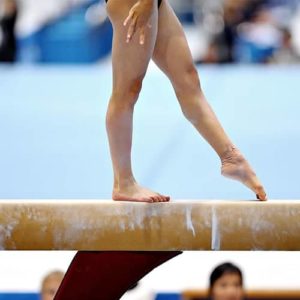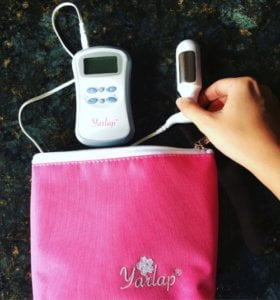You might think that female athletes, or women who exercise, who maintain an active lifestyle would have control over the muscles in their body, and you’d be right! But, not entirely. They may not have total control over their bladder.
 Female athletes are especially susceptible to urinary incontinence for a whole variety of reasons. In one study, it was reported that 47% of female athletes, or physically active women, experienced urinary incontinence after their vaginal deliveries. But those numbers are nothing compared to the young female athletes with urinary incontinence.
Female athletes are especially susceptible to urinary incontinence for a whole variety of reasons. In one study, it was reported that 47% of female athletes, or physically active women, experienced urinary incontinence after their vaginal deliveries. But those numbers are nothing compared to the young female athletes with urinary incontinence.
The bladder receives all kinds of pressure from the body’s constant activity; as you can imagine, high-impact sports such as running with lots of repetitive motion are the biggest offenders. Jumping can also be a major contributor to incontinence. When you jump, you may be stretching when you set off, but the impact of the landing puts a tremendous amount of pressure on the bladder through the abdomen.
The Hard Truths
Now it’s time for the cold hard facts. In a separate comprehensive study of urinary incontinence in female athletes indicates that at least 51 percent have experienced some form of urine loss. Interestingly, the average age of the women in this study is around 23 years old. Generally, it is assumed that urine loss and bladder leakage is experienced by older women. Around 43% of female athletes experience urine loss while practicing their sport and 42% of female athletes experience urine loss during their daily activities. 44% leak urine at least a few times while 10% (!) leak urine frequently.
A Sport by Sport Breakdown
The bright part of this whole situation is there is positive information. You might like to know that not every sport carries the same risks for urinary incontinence. The activities most likely to make you pee your pants?
Starting out the top 3 sports with the highest rates of urine loss and bladder leakage are:
- Aerobics: approximately 40% of female participants deal with some form of incontinence. Given the constant, repetitive motion, this is no surprise.
- Ballet: around 43% of female participants deal with some form of incontinence. The intense training and wide range of motion seen in ballet create the conditions for urine to leak.
- Gymnastics: a shocking 56% of female participants deal with incontinence. You might think that the flexibility of most gymnasts would apply to their pelvic floor muscles as well, but that is not the case. In reference to previous paragraphs, gymnastics is a high-impact sport with an incredible amount of jumping. When you are constantly leaping and landing, your bladder and pelvic floor are dealing with tremendous amounts of pressure for long periods of time. In addition, constantly keeping your buttock muscles flexed will cause fatigue, wearing out your muscles. This does not bode well for your urinary capabilities.
How the Yarlap® Can Help

All rights belong to Relevium Labs Inc. © 2017
If you are an athlete reading this, you may be thinking “Gee, I don’t wanna wet myself, but what can I do? Kegels are annoying and I don’t want to add even more exercise to my schedule”. Kegels are notoriously difficult to execute properly, meaning many of you doing them are not gaining any benefit. The Yarlap® is a little gift that won’t let you down for female athletes. The device accounts for your already-busy schedule by slowly stimulating your pelvic floor muscles in daily sessions of just 20 minutes. The best part? The device does all the work for you; you can kick back and relax while toning your pelvic floor, instead of expending even more energy. Nothing should stop you from being the best you can be – especially incontinence.



